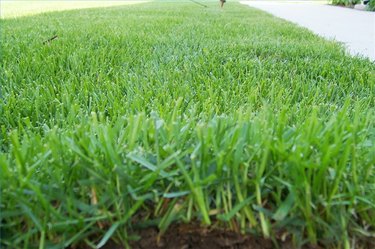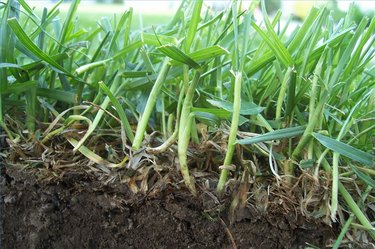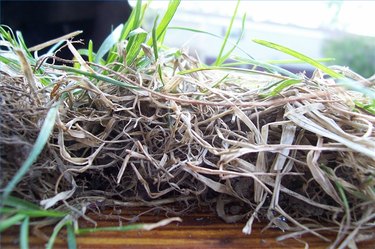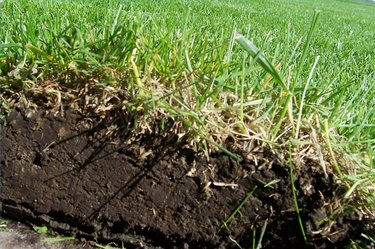
We all have a neighbor whose lawn is perfectly green all season, never suffers from pests and chokes out weeds before they start. For the rest of us, lawn maintenance can be a mystery, especially when it comes to tasks like dethatching. Knowing when to dethatch is almost as important as knowing how to operate a dethatching machine. Soil, grass type and growing season all figure in the equation.
The Basics
Video of the Day

Lawn grass needs light, water and nutrition. A little thatch insulates and prevents moisture loss, but when thatch chokes its feet, grass can't get what it needs to survive. It becomes thin and prone to infestations of weeds. Thatch gives insects places to live during the heat of summer and the cold of winter. Some grasses are more prone to thatch than others---Kentucky bluegrass and many cool-season grasses can be thatch producers. Certain grasses, like tall fescue, produce little thatch and set runners that can be decimated by thatching.
Video of the Day
Good, sharp tines, set at the proper height, will pull thatch and stimulate growth, but dull tines will pull out clumps of grass.
The Quarter Test

A well-sown lawn on a well-prepared base should seldom need dethatching, but clippings and organic debris cannot break down on compacted soil or clay. Dethatch lawns as often as thatch becomes deeper than 1/2 inch. At this depth, the thatch layer is withholding water, absorbing nutrients and shading grass crowns or roots. Grass roots will grow into the thatch instead of the soil, and plants will pull out whenever the thatch is disturbed by raking or mowing. If turf begins to thin, measure the layer of dead grass and organic debris. If the thatch exceeds the diameter of a quarter, it's strangling grass crowns. Always follow dethatching with aeration to help break up soil and get water and nutrients below the roots to guide them back into the ground.
Time of the Season

Check for thatch during fall cleanup or early spring by pulling a plug or by pushing in a spade and turning up a piece of turf. Dethatching is best completed in the spring before the grass starts growing, but check with a local university agricultural extension office to find out whether spring or late fall dethatching is recommended in your area. Fall dethatching clears out insect winter homes and uncovers the ground so that spring rains and sunshine can go right to work on grass roots. Later spring dethatching is often reserved for serious thatch, because dethatcher blades can damage crowns by cutting rapidly growing grass roots and runners. Lawn owners who dethatch more than every few years should have a soil analysis done. Heavy clay may benefit from a layer of top dressing, and compacted soil should be aerated. Complete lawn renovation may cost less---and ultimately be more successful---for turf that requires annual dethatching to thrive.